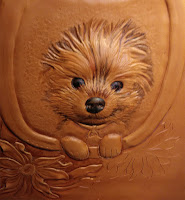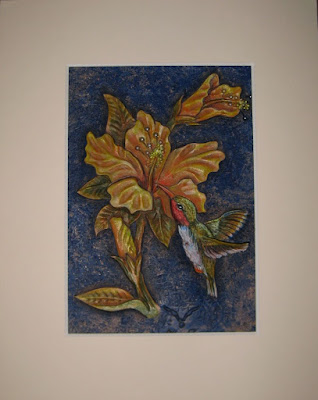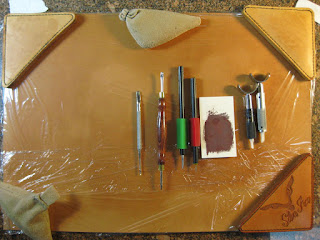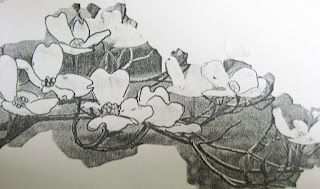Creating a Special Pet Portrait - Part 2
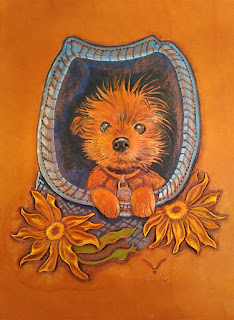
In part 1, the bag color had just started with blue shades enhancing the grisaille or purple shadows. The building of the blue over the shadows is pushing the dog further into the forefront and she looks almost ready to hop out. Note that I do not paint evenly on the bag behind the head. The closer the brush strokes come to the animal the darker I want it so that the pup stands out more. Outlining the cut edges of the design also pulls the carving forward. The right side of the bag is too light and will be toned down. A little more yellow is brushed on the flowers. Have you noticed that the purple has all but disappeared and each segment of the design still has shading?😀 I have also added some highlights to the pup's nose and eyes using the pale blue shade. I almost never use pure black or white on my paintings. Now I've introduced shades of brown; umber and sienna, to the fur, eyes and flowers in washes. To that very small amounts of titanium white are added to individual h...
